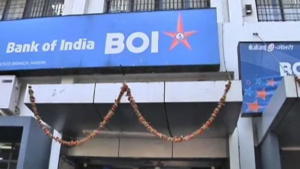Dear Aspirants,
Test your Professional Knowledge of Marketing with this questionnaire to prepare for IBPS Marketing Officer Examination. To score in IBPS SO (Marketing) Mains candidate must have adequate knowledge of Marketing Planning, New Product Life Cycle, Segmentation, Consumer Behaviour, Brand Management and more. This quiz covers important chapters of Marketing to help you prepare for the exam.
Q1. Specialty Products are those consumer goods which have certain special features which make the consumer make special efforts in their purchase. Which among the following is not characteristic of specialty product?
(a) Demand is huge
(b) Generally, have a high unit cost
(c) After sale service is very important
(d) Requires an aggressive promotion
(e) Have a high brand loyalty factor
Q2. Labelling is the display of information about a product on its container, packaging, or the product itself. Which of the following makes a label a must-have for a product?
(a) Grading of Products
(b) Identification of Product
(c) Promotion of Products
(d) Provides information required by law
(e) All of the above
Q3. In case of channel distribution, a three-level channel is depicted by which one of the following?
(a) Manufacturer>Retailer>Customer
(b) Manufacturer>Wholesaler>Retailer>Customer
(c) Manufacturer>Customer
(d) Manufacturer>Agent>Wholesaler>Retailer>Customer
(e) None of the above
Q4. Which of the following options represents the features of ‘Question Marks’ the cell of the BCG matrix?
(a) High Market Share, Low Market Growth
(b) Low Market Share, Low Market Growth
(c) Low Market Share, High Market Growth
(d) High Market Share, High Market Growth
(e) None of the above
Q5. An assurance of availability, ability, and access to a variety of products and services at competitive price and competitive price means just or fair price is ensured by ____________________ provided by Government of India under the Consumer Protection Act, 1986.
(a) Right to be Heard
(b) Right to Seek Redressal
(c) Right to Consumer Education
(d) Right to Choice
(e) Right to Safety
Q6. Which among the following is true in regard to advertising?
(a) Not Flexible
(b) High cost per person
(c) Direct & immediate feedback
(d) Requires more time to cover market
(e) None of the above
Q7. According to Philip Kotler, “Price is the amount of money charged for a product or service”. Which of the following factors affect price determination?
(a) The Utility & Demand
(b) Competition
(c) Legal Regulations
(d) Product Cost
(e) All of the above
Q8. Marketing Audit can be defined as__________
(a) The process of investigating the hierarchy of attributes that consumer examine in choosing a product.
(b) A comprehensive, systematic, periodic examination and analysis of your marketing environment, activities, goals, and objectives.
(c) A comparison of the current level of market demand to the potential demand level.
(d) A coordinated collection of data, systems, tools, and techniques by which an organization gathers and interprets information regarding marketing environment.
(e) A system used to determine the attractiveness and probability of success of a marketing activity.
Q9. What is the term for a consumer-focused exercise that involves a series of procedures to access the health of the brand, uncover its sources of brand equity and suggest ways to leverage equity?
(a) Brand Valuation
(b) Brand Knowledge
(c) Brand Audit
(d) Brand Equity
(e) Brand Awareness
Q10. Which of the following best describes Mental Accounting?
(a) The way a consumer performs the tasks of getting and using products and related services.
(b) The process of recognizing differences in sets of similar stimuli and adjusting responses accordingly.
(c) The differential effect that brand knowledge has on a consumer response to the marketing of that brand.
(d) A state of mind that motivates consumers to identify with product/service offerings, their consumption patterns and consumption behavior.
(e) Attempts to describe the process whereby consumers code, categorize and evaluate financial outcomes of choices.




 Bank Of India Credit Officer Recruitment...
Bank Of India Credit Officer Recruitment...
 SEBI Grade A Previous Year Papers with S...
SEBI Grade A Previous Year Papers with S...
 The Hindu Review December 2025, Download...
The Hindu Review December 2025, Download...








